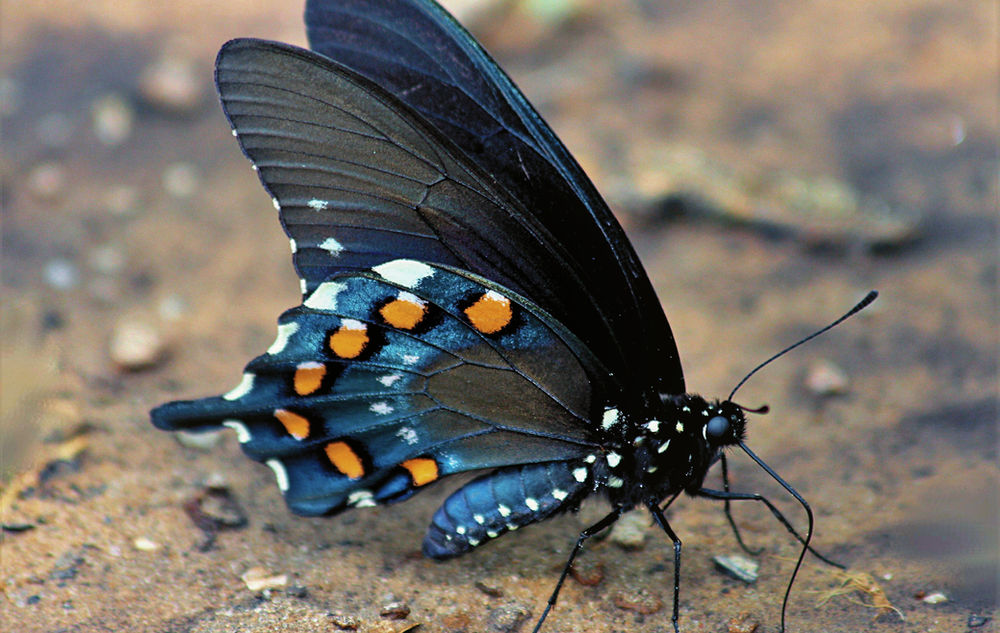top of page
Butterfly populations are a very good indicator of the health of an area's ecosystem !!
Also known as the Blue Swallowtail
Battus philenor tend to frequent warmer,
more temperate environments, and can be found mostly in open grasslands, woodlands, meadows, and backyard gardens. (They prefer any terrain where Pipevine (Aristolochia) can grow in abundance.)
The adult Pipevine Swallowtail male spends most of its time feeding and searching for mates.
Males have also been observed taking moisture and nutrients from mud, a behavior that is encouraged by the presence of other males.
Males frequently visit host plants to find females. Once found, males spend a long time hovering above the female, and courtship occurs as the male fans the female with pheromones from above. The males’ iridescent hind wings are also believed to be involved in attracting females. Males may also use sodium
taken up from mud as a nuptial gift during mating.
Females spend their time feeding, being courted by males, and reproducing.
Immediately after emerging from the chrysalis, adult butterflies spend time near the pupa case and dry their wings and remove pupal waste products from their bodies.
They are seen on wing during the spring and summer months.
The male's dorsal wings are black with vibrant blue iridescence on the hind wings.
Female iridescence is duller in appearance. Bright orange spots are visible on the back end of the ventral wings. (The adults from Californian populations of these butterflies have smaller and hairier bodies and are thought to be a subspecies Battus philenor hirsute.)
Host plants for the Pipevine Swallowtail have some form of aristolochic acids, which the larva sequesters while they feed. These acids are passed on to future eggs, pupa, and adult butterflies, so over generations, the level of acid in the body of the butterflies rises as the acid accumulates. High levels of acid make the larvae and adults unpalatable to bird predation. The bright orange spots present on larvae and adult butterflies are thought to serve as warnings to predators, alerting them to the potential bad taste, should the predator decide to make a meal out of the swallowtail.
As a result of the Pipevine Swallowtails' natural defense through acid sequestering, many other species of butterflies, like female Eastern Tiger Swallowtail and Eastern Black Swallowtail butterflies and the Spicebush Swallowtail use the Pipevine Swallowtail as a species for mimicry. Several other Swallowtail subspecies have similar coloring to the Pipevine Swallowtail so that predators may also associate them with distaste. This is called Batesian mimicry.
Pipevine Swallowtails may also be involved in Müllerian mimicry, in which two distasteful species resemble each other, and act as a mimic and mode.

Diet: caterpillars feed on plants within the genus Aristolochia (Pipevine plants), which is where the butterfly gets its common name. The plant is known to have active aristolochic acids, which the caterpillars sequester and use for their defensive properties.
Diet: adults take nectar from Thistle (Cirsium) flowers, the pink and purple flowers of the Phlox species, and ironweed of Vernonia species.
Avg, Wingspaan: 7 - 13 cm / 2.75 – 5.44 “

The single biggest threat to butterfly survival is habitat destruction!!

bottom of page




